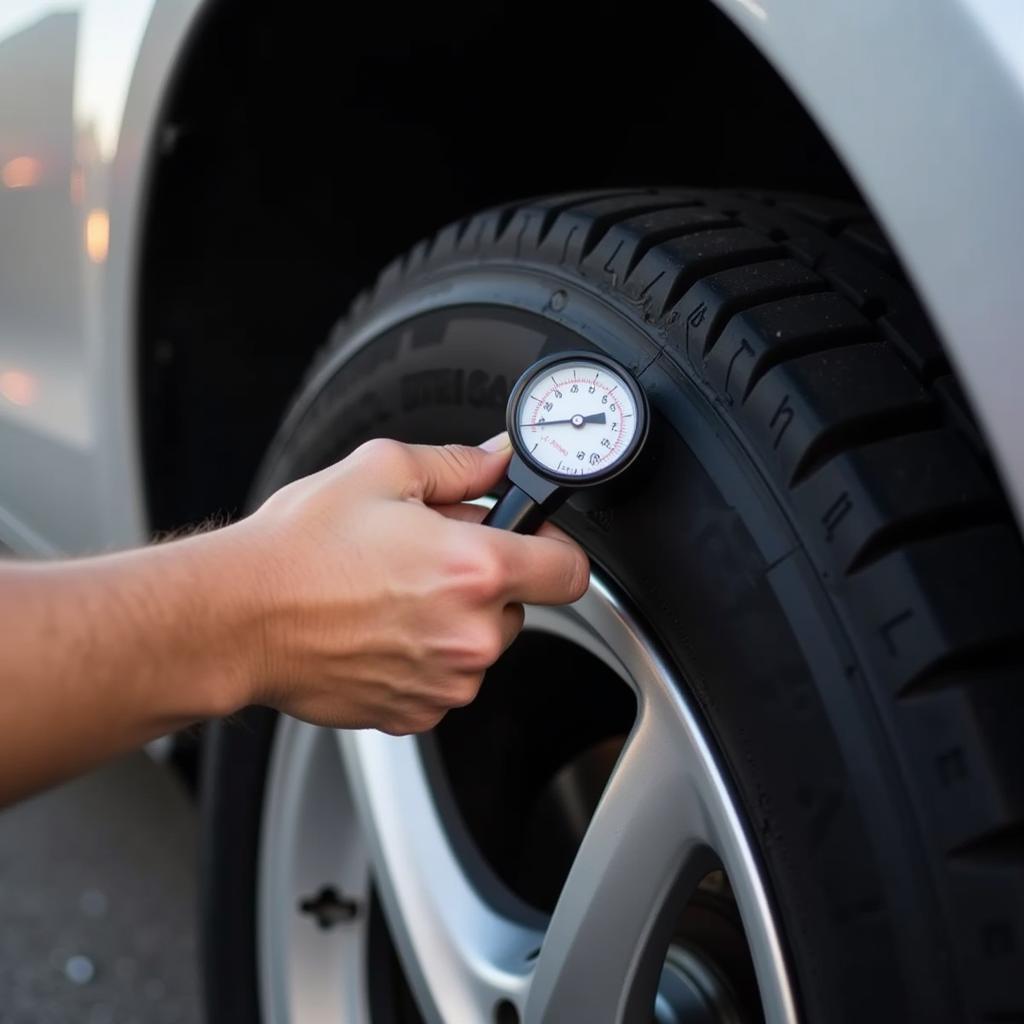Brake Maintenance Car is crucial for your safety and the longevity of your vehicle. Neglecting your brakes can lead to costly repairs and, more importantly, dangerous driving situations. This comprehensive guide provides everything you need to know about brake maintenance, from understanding the different components to recognizing warning signs and performing DIY checks. car maintenance brake pad
Understanding Your Car’s Braking System
Your car’s braking system is a complex network of components working together to slow down or stop your vehicle. It includes the brake pedal, master cylinder, brake lines, brake calipers, brake rotors (or drums), and brake pads. Each part plays a vital role, and regular brake maintenance car ensures they all function correctly.
Key Components and Their Functions
- Brake Pedal: The starting point of the braking process, transferring force to the master cylinder.
- Master Cylinder: Converts the pedal force into hydraulic pressure.
- Brake Lines: Transmit hydraulic pressure to the brake calipers.
- Brake Calipers: Squeeze the brake pads against the rotors or drums.
- Brake Rotors/Drums: Provide the friction surface for the brake pads.
- Brake Pads: The friction material that clamps against the rotors or drums to slow or stop the vehicle.
Recognizing the Warning Signs of Brake Trouble
Knowing the warning signs of brake problems is essential for proactive brake maintenance car. Ignoring these signs can lead to more serious and expensive repairs down the road. Some common indicators include:
- Squealing or Grinding Noises: Often a sign of worn brake pads.
- Vibration in the Brake Pedal: Can indicate warped rotors.
- Soft or Spongy Brake Pedal: May suggest air in the brake lines or a leak in the braking system.
- Pulling to One Side When Braking: Could be caused by uneven brake pad wear or a stuck caliper.
- Brake Warning Light: A clear indication that something is wrong with your braking system and requires immediate attention.
car maintenance brake fluid flush
DIY Brake Maintenance Checks
While some brake maintenance car tasks require professional expertise, you can perform some simple checks at home. These include:
- Visually Inspecting Brake Pads: Check the thickness of your brake pads through the wheel spokes. If they appear thin, they may need replacing.
- Checking Brake Fluid Level: Locate the brake fluid reservoir under the hood and ensure the fluid level is between the minimum and maximum marks.
- Testing Brake Pedal Feel: Pay attention to the pedal’s responsiveness and firmness. A spongy or soft pedal could indicate a problem.
Professional Brake Maintenance
While DIY checks are helpful, professional brake maintenance car is crucial for thorough inspections and more complex tasks. A mechanic can perform services like:
- Brake Pad Replacement: Worn brake pads should be replaced promptly to ensure optimal braking performance.
- Rotor Resurfacing or Replacement: Warped or damaged rotors can cause vibrations and reduced braking efficiency.
- Brake Fluid Flush: Regularly flushing your brake fluid helps remove moisture and contaminants, preventing corrosion and maintaining optimal braking performance.
- Caliper Inspection and Service: Stuck or malfunctioning calipers can lead to uneven braking and premature pad wear.
“Regular brake fluid flushes are often overlooked, but they are critical for maintaining the integrity of your brake system,” says Michael Stevens, a certified automotive technician with over 20 years of experience. “Brake fluid absorbs moisture over time, which can lead to corrosion and reduced braking effectiveness.”
How Often Should You Perform Brake Maintenance?
The frequency of brake maintenance car varies depending on driving habits and vehicle type. However, a good rule of thumb is to have your brakes inspected at least once a year or every 12,000 miles. how much does brake maintenance cost on cars
“Driving in stop-and-go traffic or mountainous terrain can significantly increase brake wear,” adds Sarah Johnson, a lead mechanic at a reputable auto repair shop. “In such cases, more frequent inspections are recommended.” brake maintenance for a car
Conclusion
Brake maintenance car is essential for safe driving and preserving your vehicle’s value. By understanding the components of your braking system, recognizing warning signs, and performing regular maintenance, you can ensure optimal braking performance and avoid costly repairs. Remember, regular inspections and timely repairs are key to keeping your brakes in top condition and ensuring your safety on the road. Contact AutoTipPro at +1 (641) 206-8880 or visit our office at 500 N St Mary’s St, San Antonio, TX 78205, United States for all your brake maintenance needs.






Leave a Reply